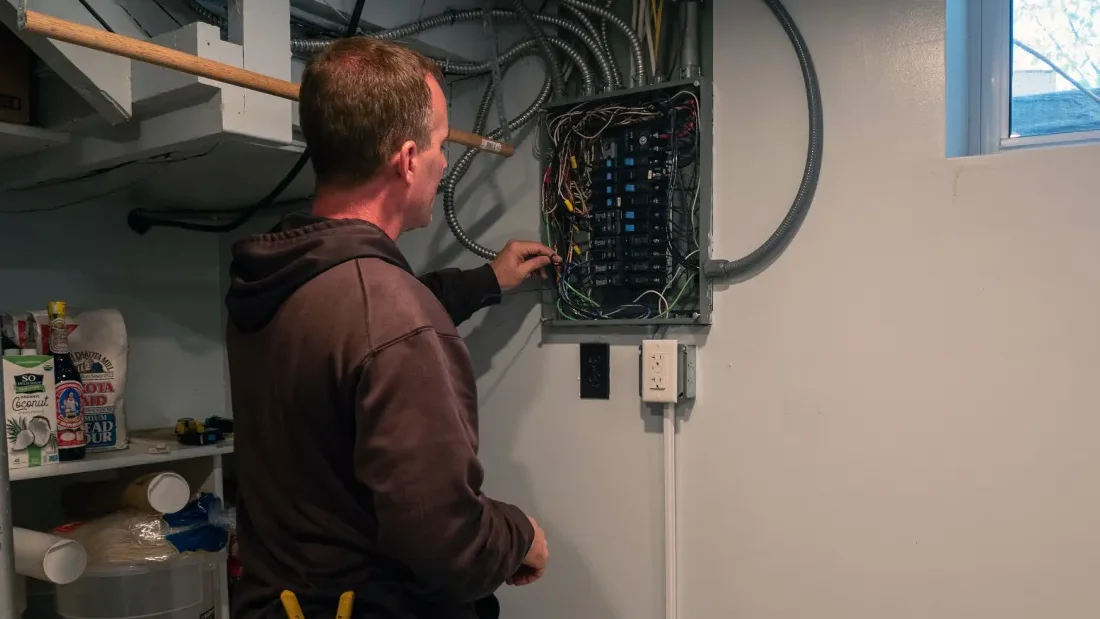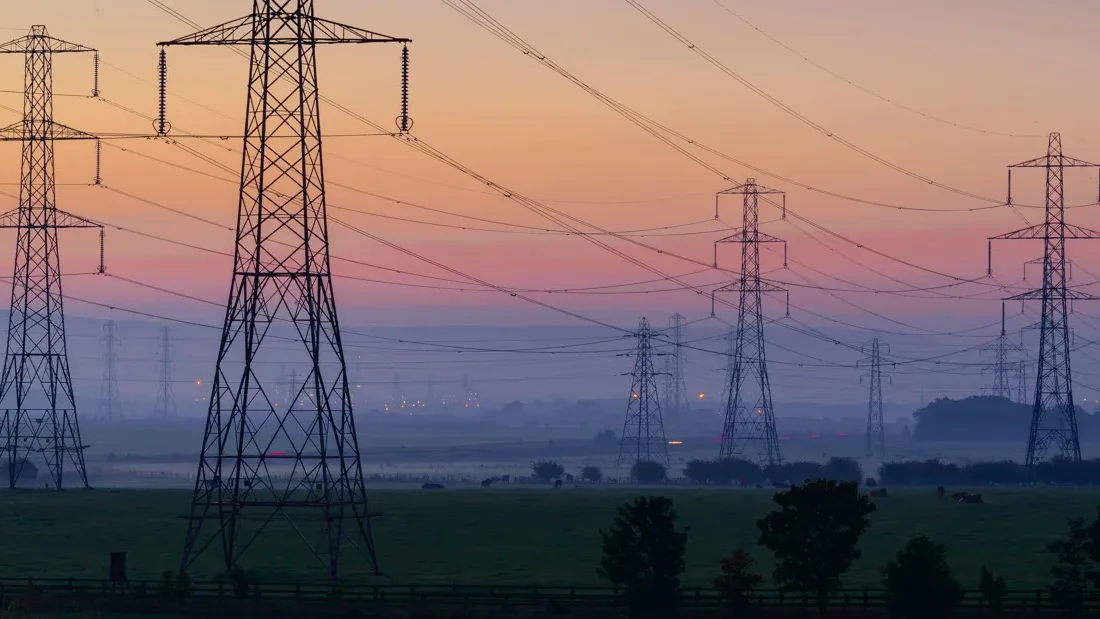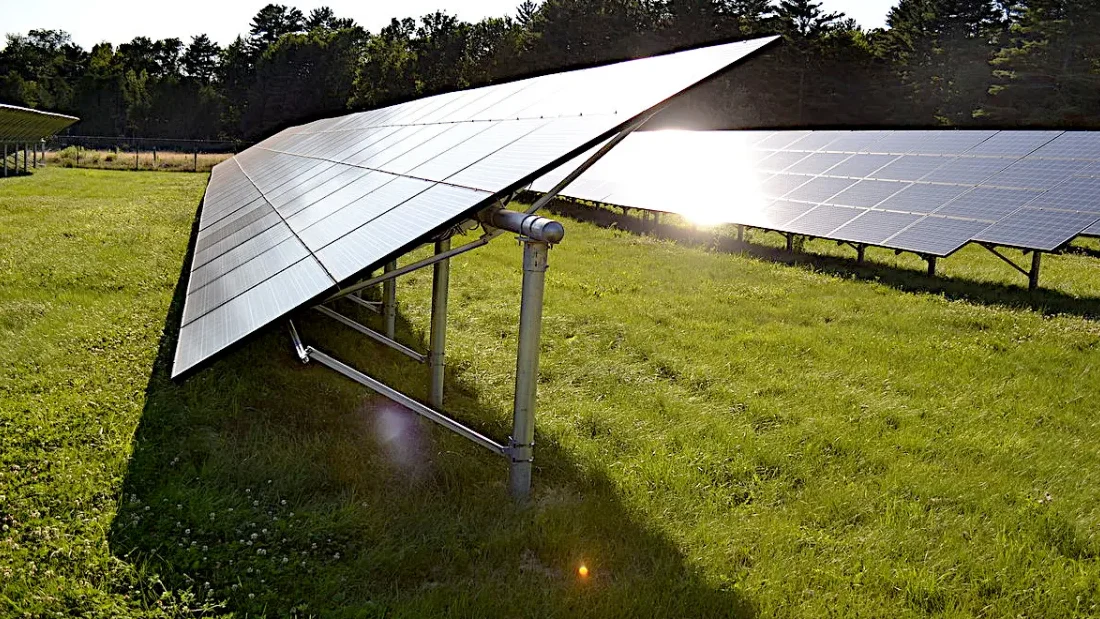
BUILDINGS: Inflation Reduction Act funding for home energy rebates will likely remain mostly unspent until after the November election; Trump allies have indicated he would revamp the program and jeopardize the funding if he is elected. (E&E News)
ALSO: As some co-op and condo buildings consider just paying the fines instead of complying with New York City’s building emissions law, the city’s council considers a bill to ease penalties. (Gothamist)
SOLAR: Covering around 10% of the world’s lakes and reservoirs with floating solar panels could generate enough electricity to power the United Kingdom four times over, and could be used to cover all power use in some small countries, scientists find. (Grist)
ELECTRIC VEHICLES:
GRID:
POLITICS:
UTILITIES: The Tennessee Valley Authority says its emissions reductions and renewable power generation makes it a clean energy leader, but critics say its proposal to build 7,000 MW of new gas generation negates that claim. (Knoxville News Sentinel)
PIPELINES: “I don’t want to be in town when it blows up” — Virginia residents react to federal regulators’ approval of the Mountain Valley Pipeline’s request to begin transporting natural gas. (WVTF, WDBJ)
GEOTHERMAL: Google agrees to purchase about 112 MW of enhanced geothermal-generated electricity from NV Energy to power its Nevada data centers. (Reuters)

ELECTRIFICATION: Southern California regulators approve rules aimed at slashing nitrogen oxide emissions by requiring businesses to replace fossil fueled industrial boilers and water heaters with electric ones. (Canary Media)
CARBON CAPTURE: PacifiCorp considers contracting with a New Mexico carbon capture firm formerly led by the utility’s current CEO to retrofit a Wyoming coal plant, raising conflict-of-interest concerns. (E&E News)
POLLUTION: Southern California regulators roll back a rule allowing industrial facilities to avoid paying emissions fees after advocates argued it removed the impetus for businesses to reduce pollution. (Los Angeles Times)
GRID: Regional transmission organization SPP proposes to link the Western and Eastern grids for the first time by placing seven Western entities under its tariff. (E&E News, subscription)
SOLAR: A California community choice aggregator agrees to purchase 48 MW of power from two proposed solar-plus-storage installations in the southern part of the state. (news release)
WIND:
OIL & GAS:
CLEAN ENERGY: Washington state seeks residents’ input on utility-scale clean energy in an effort to guide future development. (NW News)
MINING:
COAL: Colorado officials plan to attempt to extinguish an underground coal seam fire in an abandoned mine near the ignition point of the destructive 2021 Marshall Fire. (CBS News)
COMMENTARY: An energy columnist analyzes competing efforts to establish Western regional transmission organizations and day-ahead power markets, laying out the benefits, drawbacks and obstacles standing in the way of both options. (Canary Media)

EMISSIONS: Mass electrification would be the best way to reduce buildings’ emissions and hit Minnesota’s climate targets, according to a new report from a coalition of energy experts, community service groups and consumer advocates. (Sahan Journal)
STORAGE: DTE Energy is set to announce plans for a large battery storage facility at a former southeastern Michigan coal plant. (Detroit Free Press)
GRID: An Indiana consumer advocate warns against getting swept up by hyperbole about the need to build new power plants as electricity demand in the state is expected to grow because of data centers. (Indiana Capital Chronicle)
CLEAN ENERGY:
ENVIRONMENTAL JUSTICE: An Iowa county deploys more neighborhood air quality monitors that local officials say can be targeted to areas of concern and help meet environmental justice goals. (Cedar Rapids Gazette)
ELECTRIC VEHICLES: About 5,800 Minnesota residents have applied for $2,500 rebates for electric vehicles under a state program that launched four months ago. (MPR News)
EFFICIENCY: Indiana officials seek public input on how to design programs that allocate $182 million in federal funding for residential energy efficiency projects. (Indiana Capital Chronicle)
SOLAR:
PIPELINES: A company says its 10-foot-long drone provides a safer and cheaper alternative to oil and gas pipeline inspections in North Dakota. (KFYR)
COMMENTARY:

BATTERIES: Chicago officials advance regulations that would create fines for distributing lithium-ion-powered devices that fail to meet safety standards as fire risks grow with the rise of electric bikes, scooters and vehicles. (Chicago Sun-Times)
COAL: Critics question Alliant Energy’s commitment to clean energy after the utility delayed for three years plans to convert a Wisconsin coal plant to run on gas, citing grid reliability concerns. (Sheboygan Press)
CLEAN ENERGY: Former U.S. EPA Administrator Gina McCarthy says northeastern Ohio cities are providing a model for collaborative, regional planning around clean energy and job training. (WYSO)
CARBON CAPTURE:
GRID: Time-of-use rates are now in effect for Michigan’s two largest utilities, which state regulators say are meant to curb electricity use during high-demand months. (Bridge)
WIND:
SOLAR:
BIOGAS: Springfield, Missouri, plans a $31.6 million project that would convert landfill gas into renewable natural gas and generate revenue to pay off the debt service associated with the project. (Daily Citizen)
ELECTRIC VEHICLES: U.S. senators tell a senior transportation official that the pace of electric vehicle charging infrastructure construction is too slow years after the bipartisan infrastructure law took effect. (E&E News, subscription)

GRID: Sens. Joe Manchin and John Barrasso say they will soon release a draft bill to reform permitting for transmission lines and other energy infrastructure, with Manchin saying a recent FERC rule is “a Band-Aid on Congress’s inaction.” (Utility Dive)
ALSO: A key question in FERC’s proposal to accelerate transmission line construction is how much utilities will profit, with outcomes expected to vary by state. (E&E News)
CLIMATE:
ELECTRIC VEHICLES: Auto industry analysts warn that a U.S. retrenchment on electric vehicles, including if a Republican takes the White House in November, would give up significant market share to China. (CQ Roll Call)
LITHIUM: Some residents of California’s Imperial Valley are skeptical the growing lithium extraction industry will bring economic development, saying previous clean energy booms failed to deliver permanent jobs or prosperity. (KPBS)
COAL:
UTILITIES: Duke Energy’s plan to build five large natural gas plants in the Carolinas is on a collision course with new Biden administration rules that would throttle the plants’ use in just eight years. (Energy News Network)
WIND: The developers of two Northeast offshore wind farms say they’ve canceled an agreement to use Dominion Energy’s new installation ship, saying only that “we have secured an alternative installation vessel.” (CT Examiner)

GRID: AEP Ohio asks state regulators for new rate structures that would require data centers and cryptocurrency mining facilities to commit to long-term purchase agreements as the industry threatens to spike power demand. (Columbus Dispatch)
ALSO: Federal energy regulators approve sweeping transmission policy changes that aim to speed up interregional lines to move clean energy, improve long-term planning and fairly spread out costs. (Reuters)
MINING: Geologists say they have found a massive deposit of manganese in northern Minnesota and are determining whether it’s feasible to mine as a key mineral to reinforce steel and make lithium-ion batteries. (WCCO)
OIL & GAS: North Dakota enhanced oil recovery pilot projects could potentially unlock billions more barrels of oil over the coming decades, state officials say. (North Dakota Monitor)
CLEAN ENERGY:
HYDROGEN: High-profile hydrogen and advanced battery projects in Michigan face major uncertainty as demand for the products remains in question and investors rein in spending on unproven technologies. (Crain’s Detroit Business, subscription)
UTILITIES: The death of former Public Utilities Commission of Ohio Chairman Sam Randazzo, who was facing federal and state charges for his alleged role in a major utility corruption scheme, was officially ruled as a suicide. (Statehouse News Bureau)
CLIMATE: Homeowners across the Midwest are being dropped from their insurance policies as insurers increasingly lose money from more extreme weather events tied to climate change. (New York Times)
SOLAR:
STORAGE: Detroit-based utility DTE Energy seeks proposals from developers to build energy storage projects totaling about 120 MW. (Renewable Energy World)
COMMENTARY:

GRID: A new order from the Federal Energy Regulatory Commission will require grid operators to plan for a massive transmission buildout to support renewable energy, but critics say the rule infringes on state authority and could be subject to legal challenge. (Canary Media)
ALSO:
TRANSPORTATION: A coalition of 24 states yesterday petitioned a federal court to overturn EPA rules limiting emissions from trucks, while a separate lawsuit challenges California’s phase-out of diesel engines. (Associated Press)
ELECTRIC VEHICLES: As anticipated, the Biden administration yesterday announced a new 100% tariff on Chinese electric vehicles and 50% on solar components; China claims the move violates international trade rules. (CNN)
CLIMATE:
POLITICS: House Democrats are investigating whether Donald Trump’s solicitation of $1 billion in donations from oil companies violates federal campaign finance laws. (Washington Post)
NUCLEAR:
COAL: Federal and state records show a company that operates an Alabama coal mine where an explosion killed one nearby resident and critically injured another has been cited hundreds of times for safety violations and is delinquent on dozens of penalties. (Inside Climate News)
ELECTRIFICATION: California lawmakers advance legislation that would require labels on all new natural gas stoves warning customers of potential health hazards resulting from the appliances’ emissions. (Associated Press)
COMMENTARY:

GRID: The U.S. Energy Department announces 10 areas across the country where it intends to use unprecedented federal power to quickly fund and build major transmission projects that connect regional grids. (Canary Media)
CLEAN ENERGY:
POLICY: Of the $1.1 trillion the Biden administration has passed for infrastructure spending, emissions reduction measures, and other priorities, just $125 billion has so far been spent, an analysis finds. (Politico)
OIL & GAS:
CARBON CAPTURE: A $100 million competition that seeks innovative ways to capture and sequester carbon announces a list of finalists. (Canary Media)
UTILITIES: Two years after California lawmakers passed a proposed fixed monthly utility charge designed to slash electricity use and reduce low-income residents’ bills, advocates say it has amounted to a gift for utilities. (Los Angeles Times)
STORAGE: The U.S. Energy Department seeks input on potential manufacturing and design challenges that could affect grid-scale battery storage deployment. (Utility Dive)
EFFICIENCY: Minnesota clean energy advocates say the state can make significant strides in reducing carbon emissions and saving energy costs by adopting updated building codes. (MPR News)

The Port of Cleveland is going electric.
One of the Great Lakes’ largest shipping ports is transforming part of a large warehouse into an “electrification hub” to anchor its emission-cutting efforts in the coming decades.
The project is among the Cleveland-Cuyahoga Port Authority’s first steps toward its goal of net-zero emissions for its own operations by 2050. The target does not include “Scope 3” emissions from the ships, trains, and trucks that come and go from the port, but officials hope the upgrades will support their emissions cuts as well.
“Upgrading the electric feed into the terminal is not the most exciting thing,” said Carly Beck, the port’s senior manager for planning, environment and information systems, but it’s a necessary foundation for all other parts of the port authority’s climate plan.
Shipping ports are a major source of not only climate emissions but also harmful air pollution for nearby communities. Fossil fuels power most of the cranes, vehicles, and other equipment used to move commodities and consumer goods around the globe. The United Nations estimates that global shipping is responsible for about 3% of emissions worldwide.
The Cleveland-Cuyahoga County Port Authority became the first port on the Great Lakes to announce a net-zero emissions goal when its board unanimously approved its climate action plan last September. In February, the board approved spending $32 million from state and federal transportation grants to modernize the warehouse and make electrification upgrades.
Cleveland’s downtown port on Lake Erie handles about 13 million tons of cargo each year, from steel and iron ore to wind turbine parts and heavy machinery. Most goes to or comes from parts of Ohio and neighboring states via rail or truck.
“Lake Erie … sits at a very important position geographically as part of the Great Lakes,” said Dana Rodriguez, a senior analyst on global shipping at the Environmental Defense Fund.
The Cleveland-Cuyahoga County Port Authority, like many of its U.S. counterparts, is a public entity that owns and maintains infrastructure at the port. It contracts with a commercial operating company, Logistec, to run day-to-day operations.
The port considered multiple approaches for cutting greenhouse gas emissions, including hydrogen power, before deciding to focus its efforts on electrification, Beck said. All told, the port estimates full electrification will require roughly 5 to 7 megawatts of available power, she said. Design work for modernization and the electrification hub at the port’s Warehouse A is underway.
The port also is working with Logistec on a grant application for funds under the U.S. EPA’s Clean Ports Program, set up under the 2022 Inflation Reduction Act. Roughly $2.8 billion in competitive grants are available for deploying zero-emission technology, with an additional $150 million for climate and air quality planning. The application is due May 28.
If successful, the port plans to add 2 megawatts of solar capacity on top of Warehouse A, which will provide a significant chunk of its anticipated electrical needs. Other funds would be used to start acquiring electric equipment for port operations, such as a large forklift.

Over time, the port plans to acquire additional equipment as and when machinery and funds become available, including replacements for a large crane and other material-handling equipment.
“It’s just a matter now of biting off chunks as we can,” Beck said. Timing for the acquisitions will also depend on when different types of electrical equipment become available, which will involve ongoing review.
Port Authority President and CEO Will Friedman said the electrification push fits with the port’s broader sustainability goals, including reducing water pollution in Lake Erie and managing dredged material more sustainably.
“We’re doing it because it’s the right thing to do. We have a social conscience here,” Friedman said.
The decision also should help the port stay competitive, especially as more companies consider the indirect emissions of their contractors.
“We think that’s going to be the future if you’re part of the supply chain network,” Friedman said, adding that ignoring greenhouse gas emissions really isn’t an option. “All industries are trying to figure out how they can decarbonize, and maritime shipping is certainly a part of that.”
Decarbonization makes sense for Cleveland and Cuyahoga County in the global scheme of things, said Grant Goodrich, executive director for the Great Lakes Energy Institute at Case Western Reserve University.
“Getting products in and out of Europe and being able to advertise and market that you can do it in a more emissions-friendly manner gives you a competitive advantage,” Goodrich said. The European Union already is pushing for the shipping sector to cut greenhouse gas emissions, and Goodrich expects that will ultimately become important in the American marketplace as well. Cutting greenhouse gases also could help attract more cruise ship business to Cleveland, he added.
The port’s regional nature likely will make some aspects of decarbonization easier. For starters, the port generally does not store fuel for ships on site. Ships typically fill up elsewhere, often from barges, depending on where they believe they can get the best deal, Friedman said. If a ship does need extra fuel while in Cleveland, trucks deliver it.
On the other hand, the Cleveland-Cuyahoga County Port Authority has less bargaining power than some much larger ports on the East and West coasts. That limits its ability to increase fees, which makes grants and other types of funding particularly important.
The Cleveland-Cuyahoga Port Authority’s focus on Scope 1 and Scope 2 emissions is consistent with the goals for a majority of other ports included in a March 2024 report from the Environmental Defense Fund and Arup. However, the report noted, the majority of total port emissions driving human-caused climate change generally are not within ports’ direct control and would fall into Scope 3.
“Action in the broader zone of user and community and industry influence, where impacts are often far greater and where potential benefits are significant, is lacking,” the EDF report said.
The Cleveland-Cuyahoga County Port Authority’s upgrades include planning to provide power for some of those other indirect emissions.
“We don’t want to forget about Scope 3,” Beck said.
She added that the port anticipates offering incentives to encourage ships and others to reduce their emissions.
An example would be for ships to plug into electrical shore power, known as “cold ironing,” instead of running diesel engines while in port. Besides cutting greenhouse gas emissions, the process can also reduce pollution from particulate matter, nitrous oxides, hydrocarbons and carbon monoxide. The port also hopes to encourage independent operators to acquire electric tugboats and similar equipment.
“Port decarbonization is just one key piece of the full decarbonization equation,” said Rodriguez at the Environmental Defense Fund. “It is also up to the trucking and shipping sectors to meet the ports halfway and contribute to the decarbonization efforts. In an effort to reach net zero by 2050, all stakeholders must play their part.”

UTILITIES: Colorado’s largest electric cooperative officially splits with Tri-State Generation and Transmission following years of wrangling over the wholesale power supplier’s rates, fossil fuel reliance and limits on local generation. (Greeley Tribune)
ALSO: Arizona regulators reject a utility’s request to exempt its proposed natural gas plant expansion in the western part of the state from environmental reviews. (12 News)
TRANSMISSION: Developers complete construction on the 125-mile Ten West Link transmission line designed to move solar power between California and Arizona. (Inside Climate News)
GRID: PacifiCorp becomes the first entity to formally commit to the California grid operator’s extended day-ahead power market. (RTO Insider, subscription)
SOLAR:
CLEAN ENERGY:
COAL: Wyoming Gov. Mark Gordon plans to sue the Biden administration over rules aimed at reducing power plant pollution, saying it will hasten the demise of the state’s coal industry. (WyoFile)
OIL & GAS:
HYDROPOWER: Alaska utilities send their proposed plan for the Eklutna hydropower dam to Gov. Mike Dunleavy after months of debate over the facility’s management. (KTUU)
ELECTRIC VEHICLES:
CLIMATE: Portland, Oregon’s clean energy fund considers investing $50 million in seven school districts to fund solar installations, efficiency upgrades and other emissions reduction and climate change mitigation efforts. (OPB)